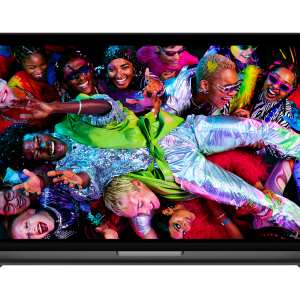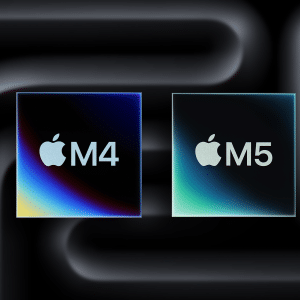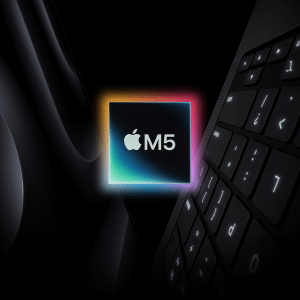The leaked chip identifiers reveal early details about the architecture of Apple’s M4 chip. Building on the foundation of the M-series chips, the M4 aims to deliver faster CPU and GPU performance while maintaining power efficiency—a hallmark of Apple’s approach to silicon design.

1. Advanced 3nm Manufacturing Process
Industry reports suggest that the M4 chip will be manufactured using TSMC’s 3-nanometer process, the most advanced semiconductor technology currently available. This shift to a smaller process node improves both performance and energy efficiency by allowing more transistors to fit into a smaller space.
This advancement will likely result in improved multitasking capabilities, faster data processing, and extended battery life for the MacBook Air.
2. Increased CPU & GPU Core Counts
Apple may increase the number of performance and efficiency cores in the M4 chip to further optimize processing power. The balance between high-performance and low-power cores ensures that the MacBook Air can handle both demanding tasks, such as video editing, and everyday activities like web browsing with minimal power consumption.
On the GPU side, the M4 chip is expected to feature enhanced graphics capabilities, making it ideal for tasks like 3D rendering, gaming, and running creative applications.
3. Machine Learning & Neural Engine Enhancements
Apple is also likely to enhance the Neural Engine in the M4 chip, improving the MacBook Air’s ability to perform AI-based tasks. This could include faster processing for image recognition, natural language processing, and on-device security features such as Face ID, should Apple choose to implement it on future MacBooks.
Key Features Expected in the M4 MacBook Air
Beyond the chip upgrade, the M4 MacBook Air is expected to introduce a range of new features aimed at improving usability, performance, and connectivity.
1. Longer Battery Life
The M4 chip’s efficiency improvements are expected to extend the MacBook Air’s already impressive battery life. Users can anticipate up to 20 hours of video playback or all-day performance on a single charge, making the device ideal for remote work, travel, and study sessions.
2. Enhanced Display Technology
Apple may introduce a next-generation Liquid Retina display with improved brightness, contrast, and color accuracy. The display could also feature ProMotion technology, offering a 120Hz refresh rate for smoother scrolling and more responsive visuals.
This would enhance both productivity and entertainment experiences, particularly for users who rely on creative apps like Final Cut Pro and Adobe Photoshop.
3. Support for Wi-Fi 7 & Bluetooth 5.3
As wireless connectivity standards continue to evolve, the M4 MacBook Air is expected to support Wi-Fi 7 and Bluetooth 5.3. These upgrades will provide faster wireless speeds, lower latency, and improved connection stability, especially in environments with multiple devices.
This enhanced connectivity will be beneficial for users who rely on cloud services, video conferencing, and wireless peripherals.
How the M4 Chip Fits into Apple’s Silicon Strategy
The M4 MacBook Air represents a critical step in Apple’s ongoing silicon roadmap, designed to maintain its competitive edge in the laptop market. Apple’s shift to in-house chips has already transformed the Mac lineup, with each generation delivering impressive gains in performance and efficiency.
1. Unifying Hardware & Software
Apple’s control over both hardware and software allows for deeper optimization than what is possible with third-party processors. The M4 chip is expected to deliver even faster app performance and seamless multitasking, thanks to tighter integration with macOS.
Developers can also take advantage of Metal and Swift frameworks to create high-performance apps that are finely tuned for Apple Silicon.
2. Phasing Out Intel Models
As Apple completes its transition away from Intel processors, the M4 chip will further cement the MacBook Air’s role as a leader in the ultraportable laptop category. Future software updates may increasingly favor Apple Silicon, with certain features and optimizations becoming exclusive to M-series Macs.
This shift encourages users still on Intel-based Macs to upgrade to newer hardware in order to benefit from the full range of macOS capabilities.
Comparison with the M2 & M3 MacBook Air Models
With the release of the M4 MacBook Air, Apple is expected to continue its pattern of delivering incremental yet impactful improvements. Here’s how the M4 chip may compare to previous models.
1. Performance Gains
The M4 chip is projected to offer a 20-30% performance boost over the M2 and a 10-15% improvement over the upcoming M3 chip. These enhancements will be especially noticeable in tasks that require sustained processing power, such as compiling code, rendering videos, and handling large datasets.
2. Efficiency Improvements
One of the key advantages of Apple’s chip design is energy efficiency. The M4 MacBook Air is likely to deliver superior battery life and thermal management, making it quieter and cooler than both M2 and M3 models during intensive tasks.
3. Graphics & Gaming Performance
With an upgraded GPU, the M4 chip could bring significant gains in graphics performance, enabling smoother frame rates in games and faster rendering in creative applications. This positions the MacBook Air as a viable option for casual gamers and content creators who need portable power.
Expected Release Date & Pricing
While Apple has not officially confirmed the launch date for the M4 MacBook Air, analysts predict that it may debut in late 2025 or early 2026. Apple typically unveils new MacBook models during its annual WWDC event or through fall product announcements.
Pricing Expectations
The base price for the M4 MacBook Air is expected to remain competitive, likely starting at around $1,199 to $1,299 USD. Apple may offer multiple configurations based on storage and memory options, allowing users to choose a model that suits their needs.
Additionally, Apple may continue to sell M2 or M3 MacBook Air models at a lower price point to cater to budget-conscious customers.
How the M4 MacBook Air Enhances User Experience
The combination of Apple’s custom silicon, macOS optimizations, and hardware upgrades will deliver a comprehensive improvement to the user experience.
1. Seamless Productivity
With faster processing and better multitasking, users can run multiple apps without experiencing slowdowns. The M4 MacBook Air will be particularly well-suited for professionals who need reliable performance for productivity apps like Microsoft Office, Slack, and Zoom.
2. Immersive Entertainment
Improved graphics, a high-resolution display, and longer battery life make the MacBook Air an excellent device for streaming content, playing games, and editing videos. Spatial audio support with AirPods Pro will further enhance the multimedia experience.
3. Accessibility & Ease of Use
Apple’s focus on accessibility will likely extend to the M4 MacBook Air, with features such as VoiceOver, Dictation, and customizable controls making the device more inclusive for users with disabilities.
The M4 MacBook Air represents Apple’s next step in redefining portable computing. By delivering cutting-edge performance, improved efficiency, and enhanced features, Apple is ensuring that the MacBook Air remains a top choice for both professionals and everyday users.
With Apple’s silicon innovations at the forefront, the future of the MacBook Air looks brighter than ever. Whether you’re upgrading from an older Mac or considering a switch to Apple for the first time, the M4 MacBook Air promises a compelling blend of power, portability, and design excellence.












